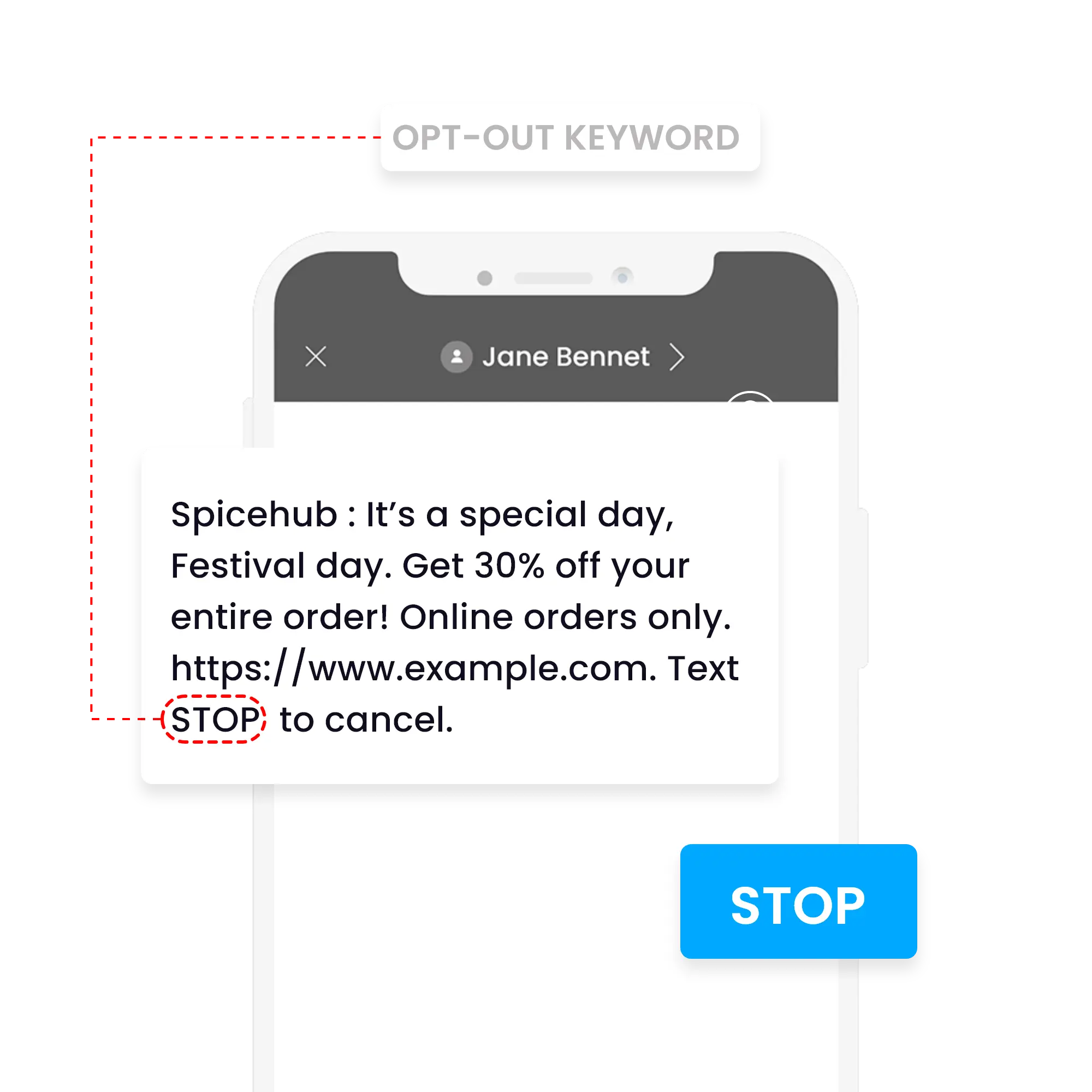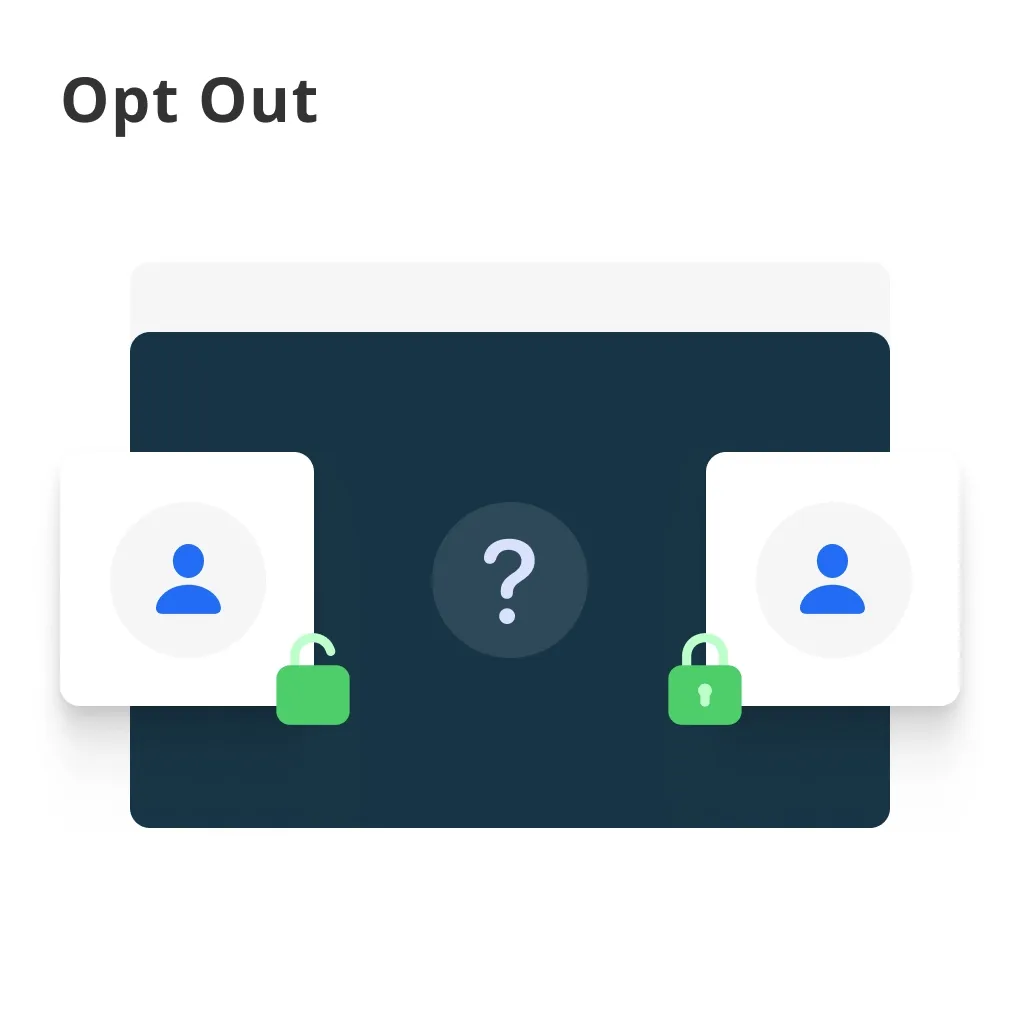What is Opt Out?
Opt out refers to a user's ability to decline or withdraw from a particular service or subscription in which they have been automatically included in, often as a part of a sign-up process.
In the context of digital communication and marketing, opting out signifies a user's decision not to receive further marketing communications such as email newsletters, text messages, or targeted advertising.
The Significance of Opt Out Options
Opt out options are crucial for respecting user autonomy and privacy.
They serve as an essential check against unsolicited communications, and their availability is often mandated by various privacy laws and regulations, such as the General Data Protection Regulation (GDPR) in the European Union, the Telephone Consumer Protection Act (TCPA) in the United States, and the CAN-SPAM Act that sets requirements for commercial messaging.
How Does Opt Out Work?

Here’s a detailed look at the working of Opt out services.
Email Communications
In email marketing, a clear and conspicuous opt out or unsubscribe link is usually provided in the footer of an email.
Clicking this link should lead the user to a page where they can confirm their decision to unsubscribe from future communications.
Text Messages

For SMS marketing, users often opt out by texting a specific word or phrase like "STOP" to the sender's number.
Online Advertising
In the case of targeted online advertising, users may opt out by managing their cookie preferences via the website's privacy settings, using browser extensions, or through industry websites like the Digital Advertising Alliance's opt out page.
Telemarketing

Opt out options for telemarketing calls often involve registering with a "Do Not Call" list, which telemarketers are required to honor.
Sales and Data Sharing
Users can opt out of having their data sold or shared by following the processes laid out in the privacy policy of the company collecting the data, which can sometimes involve interacting with customer service or setting an account preference.
Importance of User-Friendly Opt Out Methods
The ease with which a user can opt out is a critical factor in customer experience and legal compliance.
Cumbersome opt out processes can lead to frustration, complaints, or even legal action. User-friendly opt-out methods, on the other hand, demonstrate respect for consumer preferences and can enhance a company's reputation.
Suggested Reading:
What is Double Opt-In & its Significance
Challenges with Opt Out Mechanisms
Here are some potential challenges that businesses and users might face concerning opt out mechanisms
- Technical Complexity: The variety of channels and sophisticated marketing technologies can make the process of opting out less straightforward for users and more challenging for businesses to implement effectively across all platforms.
- Persistence of Data: Even after a user opts out, their data may persist in backups or archives, raising concerns about how truly removed they are from a system.
- Re-Subscription by Accident: Occasionally, users may inadvertently opt back in, for example, by interacting with a brand's content, which can trigger a resumption of communications if not well-managed by the brand.
- Inadequate Enforcement: Laws and regulations require enforcement to be effective. Brands sometimes fail to honor opt out requests promptly or adequately, which can lead to legal trouble and erosion of consumer trust.
- Legal Considerations: Businesses must heed local and international regulations regarding opt out practices to avoid penalties.
They must ensure opt out methods are easily accessible, function correctly, and comply with timelines for removing an individual from communication lists as stipulated in applicable laws.
Best Practices in Opt Out Processes

Businesses best serve themselves and their customers by adhering to the following best practices:
- Clarity and Accessibility: Opt out instructions should be clear, easy to find, and understandable to anyone who wishes to stop receiving communications.
- Immediate Acknowledgment: Organizations should promptly acknowledge opt out requests and provide a timeframe for the completion of the unsubscribe process.
- Comprehensiveness: Opting out should be all-encompassing, removing the user from all marketing lists and ceasing all types of marketing communications unless otherwise specified.
- Testing and Updating Processes: The opt out process should be regularly tested to ensure it is functioning correctly and updated to reflect changes in laws or marketing practices.
The Future of Opt Out
Looking forward, the landscape of opt out options may evolve significantly.
With the increased focus on consumer privacy and potential changes in the legislative environment, we might see a shift towards more robust privacy protections and rights for individuals to control their personal data comprehensively.
Additionally, technology will play a significant role, potentially simplifying the opt-out process through the use of AI and standardized protocols.
Frequently Asked Questions (FAQs)
How does opting out differ from unsubscribing?
Opting out involves ceasing all communications from a service or subscription, whereas unsubscribing may only remove you from a specific email list or newsletter.
Can you opt out of cookies on every website?
Not every website offers an easy or straightforward mechanism to opt out of cookies, but regulations in some regions require that they do.
How do privacy laws affect your opt out rights?
Privacy laws, like GDPR in Europe, grant individuals more control over their personal data, mandating clear options for opting out of data collection and processing.
What happens to your data after you opt out?
After opting out, companies should cease processing your data for the purposes you opted out from, though they might retain the data for legal reasons.
Is opting out the same as deleting an account?
No, opting out usually refers to withdrawing consent for certain communications or data processing, while deleting an account removes your data from the service entirely.

